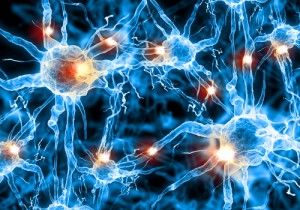Study on Neurons’ Function Provide Insight on Alzheimer’s, Other Brain Diseases

 The electrically charged cells in the nervous system, called neurons, react differently compared to electrical signals at the molecular level, even though they are the same type of cell, according to new research conducted at the University of Missouri. The variability of the neurons, which are responsible for the interpretation and transmission of information through electrical and chemical signals, may lead to a better understanding of the causes of brain disorders and neural diseases, such as Alzheimer’s disease or epilepsy.
The electrically charged cells in the nervous system, called neurons, react differently compared to electrical signals at the molecular level, even though they are the same type of cell, according to new research conducted at the University of Missouri. The variability of the neurons, which are responsible for the interpretation and transmission of information through electrical and chemical signals, may lead to a better understanding of the causes of brain disorders and neural diseases, such as Alzheimer’s disease or epilepsy.
The research team, led by David Schulz, associate professor in the Division of Biological Sciences in the College of Arts and Science and a researcher in the Interdisciplinary Neuroscience Program at MU, conducted an experiment altering the electrical inputs and outputs in the neurons, using clusters of cells from Jonah crabs. The researchers then measured the messenger RNA (mRNA) levels found.
When the normal patterns of stimulation continued, the cells demonstrated correct ratios of mRNA, producing the amount of protein required to keep the electrical impulses. However, the same was not true when they altered the patterns of activity, during which the cells revealed fundamental changes at a molecular level, according to the study conclusions recently published in the Current Biology journal.
“Genetic mutations found in neurological disorders create imbalances in the inward and outward flow of electrical current through cells,” explained Schulz. “Often, neurons react to electrical signals, or voltage, and compensate by altering their own electrical outputs. The variability in these imbalances, even among multiple cells of the same kind within the brain, is one of the major problems scientists face when trying to design therapeutics for disorders like epilepsy. Seizures in individuals can be caused by different imbalances—therefore getting to the root of how neurons act individually makes our studies important.”
The investigator and his research team had already proved in prior studies that two identical neurons were able to reach the same electrical activity in different ways. This time, he believes that the findings might suggest that neurons use either the cell’s own genetic code or its mRNA to adjust the protein production and allow the cells to react appropriately.
“We were the first to show that the correct ratios of mRNAs are actively maintained by the actual activity or voltage of the cell, and not chemical feedback. These results represent a novel aspect of regulation that might be useful for developing therapeutics for neuronal disorders later,” Schulz added.






